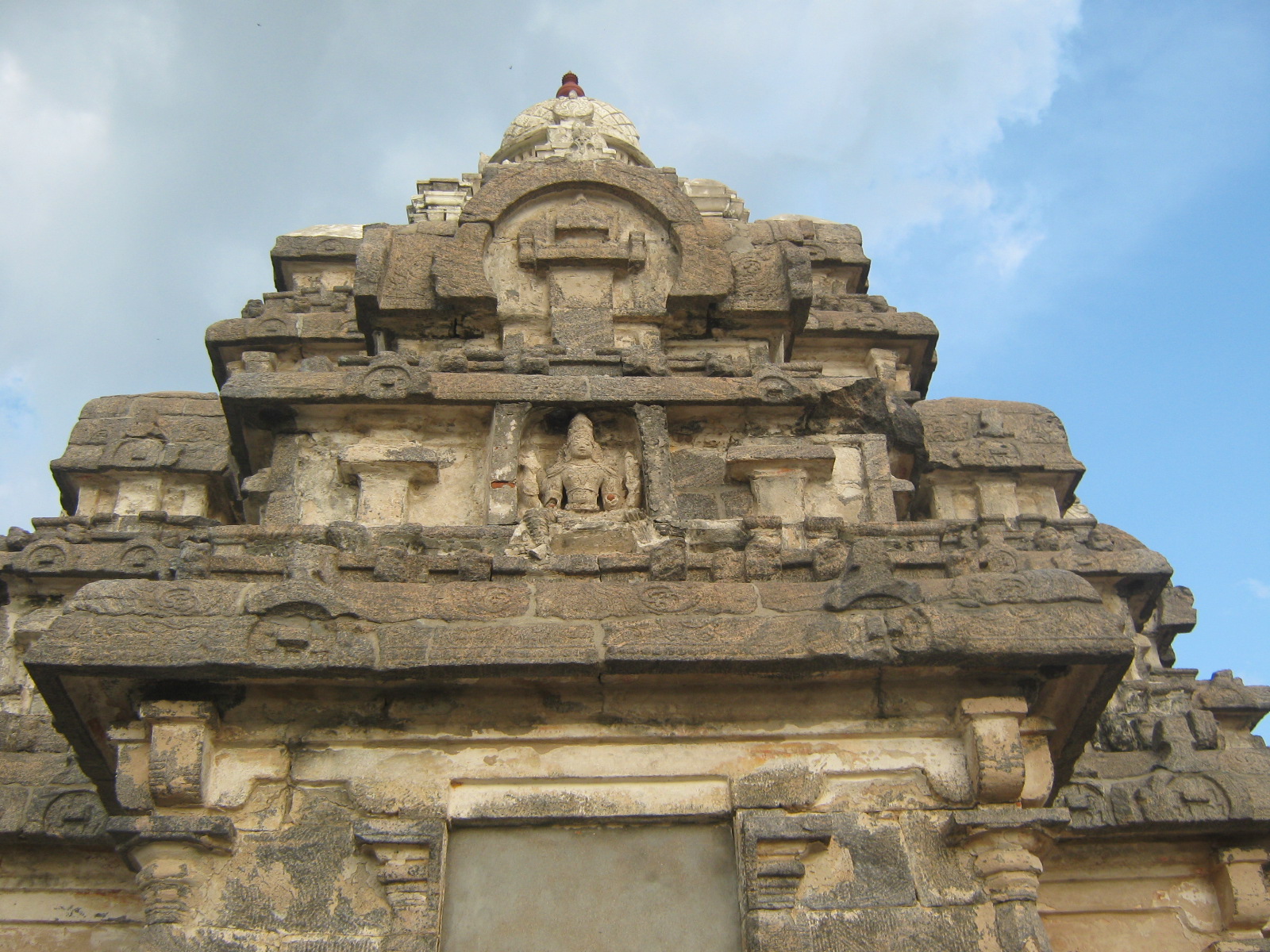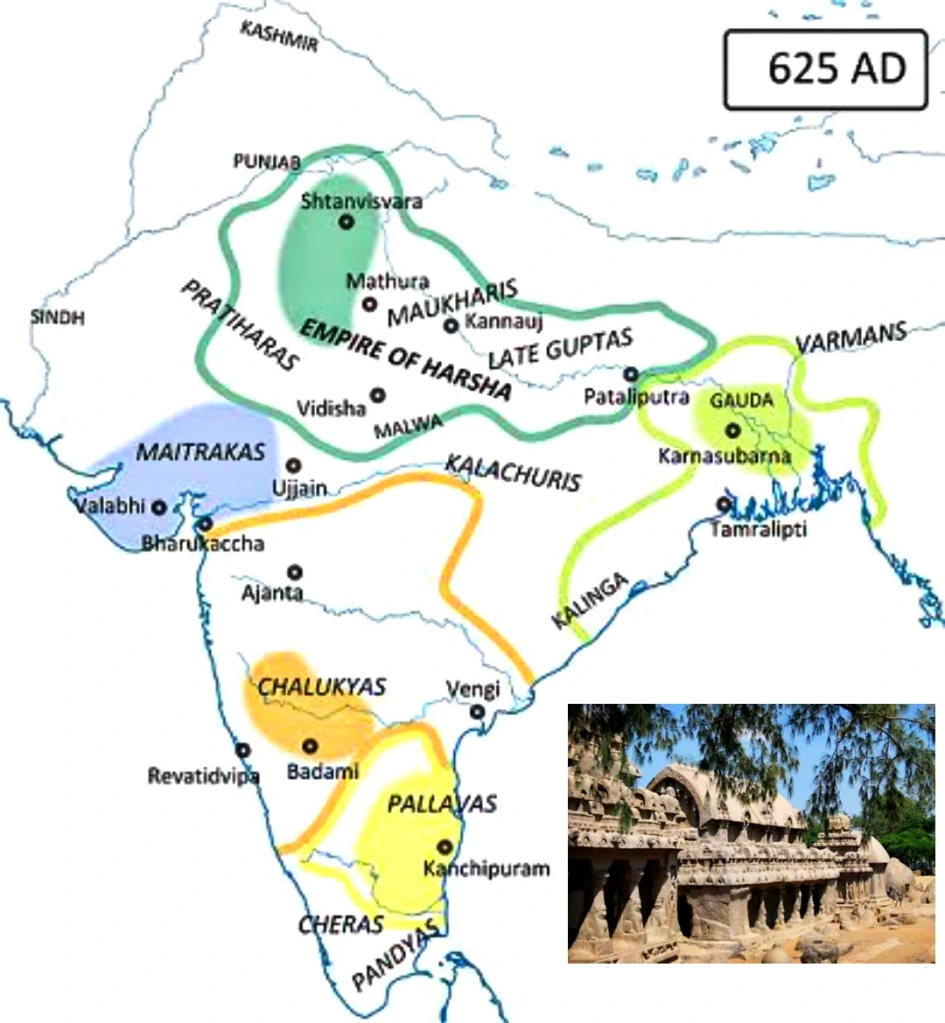
Talagirishwara Temple

30-10-2023
Talagirishwara Temple
|
For Prelims: Tala Girishwara Temple, Features, Paintings in the temple, Pallava Dynasty (Art and Architecture) , Narasimhavarman II |
Why in the news?
Neglect has taken a heavy toll on the 1,300-year-old Pallava period paintings at Talagirishwara temple at Panamalai in Villupuram district of Tamil Nadu.
About Talagirishwara Temple:
- It is located in Panamalai village of Viluppuram district in TamilNadu, India.
- It is constructed on an insignificant, small hill overlooking the Panamalai Lake.
- It was constructed by Pallava king Narasimhavarman II, popularly known as Rajasimha.
Features
- This Seventh Century structure incorporates a Vimana that resembles that of Kailasanatha temple in Kanchipuram.
- The garbhagriha stocks a Dharalingam, and as in Pallava temples of that period, there is a Somaskanda section on the hindmost wall of the shrine.
- It includes an Ardhamandapam (partial Mandapam).
- The walls of the Ardhamandapam post panels of divinities, including Brahma with Saraswati and Vishnu with Lakshmi on either flank.
- The temple faces east and the garbhagriha is enclosed on all three sides by sub shrines. Some more sub shrines and a Maha Mandapam (a massive Mandapam) have been added in the later period to the structure.
- The Vimana is 3 layered and the high tier has also been rebuilt.
- The typical Pallava mark, pillars with crouching lions, is also found.
Paintings in the temple
- The paintings in this temple bear a close resemblance to the paintings in Ajantha and Chithannavasal.
- The paintings are on the wall of a sub-temple on the northern side of the Talagirishwara (Siva) temple.
- There is a painting of Lord Shiva with eight hands dancing known as Latathilagabhani, being watched by Goddess Parvathi with her crown and well decorated umbrella.
- These paintings were older than Chithannavasal paintings.
- These paintings were created after covering the stonewalls with paste made of limestone and sand.
The Pallava Dynasty
- It was located in the South Indian subcontinent.
- The span of Pallavas’s reign was from 275 CE to 897 C.E.
- They were the most influential rulers of South India and contributed enormously in the fields of religion, philosophy, art, coins and architecture.
- Pallavas were at their peak during the reign of Mahendravarman I and Narasimhavarman I.
- Throughout their rule in Tondaimandalam, they were in constant conflict with both Chalukyas of Badami in the north and the Tamil kingdom of Cholas and Pandyas in the south.
- They are most remembered for their shore temple architecture.
Art and Architecture of Pallava Dynasty
- The religious revival of the time provided impetus for architectural activity. The Pallavas made enormous contributions to Indian art and architecture.
- The Pallavas were the forefathers of the Dravidian style of Indian architecture in the south. It was a gradual progression from cave temples to monolithic Rathas, culminating in structural temples.
- The Pallavas had also aided in the advancement of sculpture. Beautiful sculptures adorn the walls of the Mandapas.
- The sculpture at Mamallapuram depicting the "Descent of Ganges or the Penance of Arjuna" is a masterpiece of classical art.
- Music, dance, and painting had also flourished under the Pallavas' patronage. The paintings in the Sittannavasal caves date from the Pallava period.

Narasimhavarman II or Rajasimha (695 -722 A.D.)
- Narasimhavarman I was succeeded by Mahendravarman II and Parameswarvarman I and the Pallava – Chalukya conflict continued during their reign.
- Thereafter, Narasimhavarman II became the ruler of the Pallava kingdom. He was also known as Rajasimha.
- His regime was peaceful and he evinced more interest in developing art and architecture.
- The Shore temple at Mamallapuram and the Kailasanatha temple at Kanchipuram were built in this period.
- He was also a great patron of art and letters.
- The famous Sanskrit scholar Dandin is said to have adorned his court.
- He sent embassies to China and the maritime trade flourished during his reign.
- Rajasimha assumed titles like Sankarabhakta, Vadhyavidyadhara and Agamapriya.
Source:The Hindu